Interviews with Experts
Unearth Secrets to Planting Drought-Tolerant Trees
You’ve probably seen that one house on your street with a stunning, healthy oak tree that seems to thrive even during the driest months of the year. Have you ever wondered how they do it?
Well, it’s not just luck. There are specific secrets to planting drought-tolerant trees that can make all the difference in their survival and growth. These secrets can help you create a beautiful, low-maintenance landscape while conserving water and reducing maintenance.
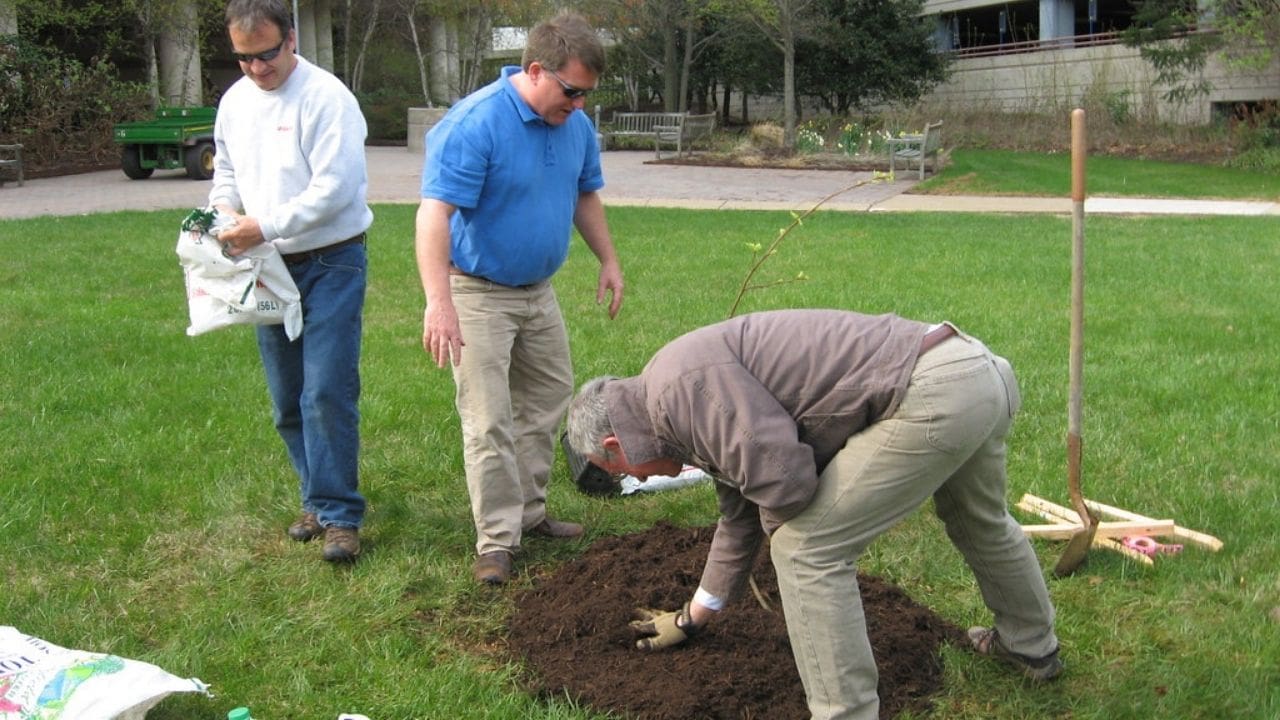

Key Takeaways
- Plant drought-tolerant trees during the dormant season to ensure successful root establishment before extreme weather conditions.
- Choose a planting location with well-draining soil and avoid low-lying areas that accumulate water.
- Assess the amount of sunlight the area receives and avoid planting too close to structures or other trees to prevent competition for resources.
- Test soil drainage and water infiltration rate before planting to ensure suitability for drought-tolerant trees and make informed decisions.
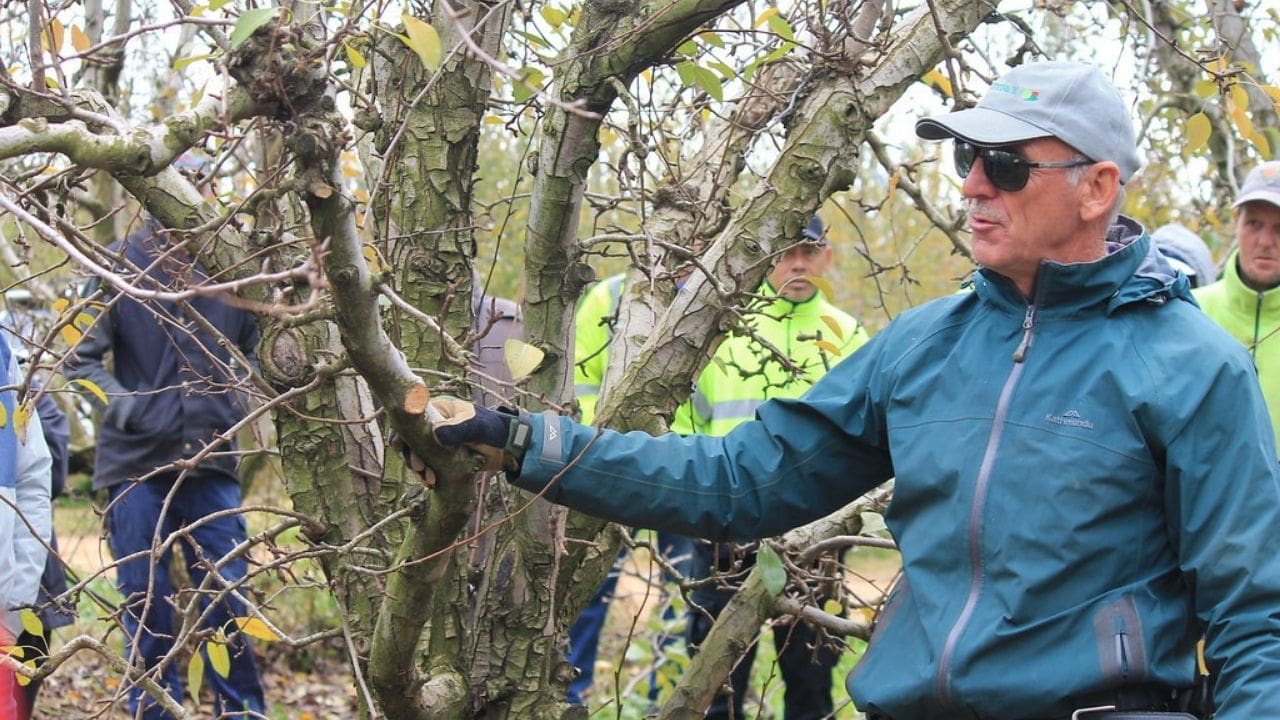

Choose the Right Time of Year
To ensure successful planting of drought-tolerant trees, it’s crucial to choose the right time of year for the task. The best time to plant these trees is during the dormant season, which is typically in the late fall or early spring. Planting during this time allows the trees to establish their roots before the stress of summer heat or winter cold sets in.
Avoid planting during the hot summer months, as the intense heat can cause undue stress to the newly planted trees, making it harder for them to establish themselves. Similarly, planting in the winter when the ground is frozen should also be avoided as it can hinder root growth.
By selecting the optimal time for planting, you give the trees the best chance at thriving in their new environment.
Additionally, consider the local climate and weather patterns when choosing the planting time. Be mindful of any impending drought conditions, as planting during a drought can make it challenging for the trees to get the necessary moisture for root establishment.
Always prioritize the well-being of the trees by choosing the right time of year for planting.
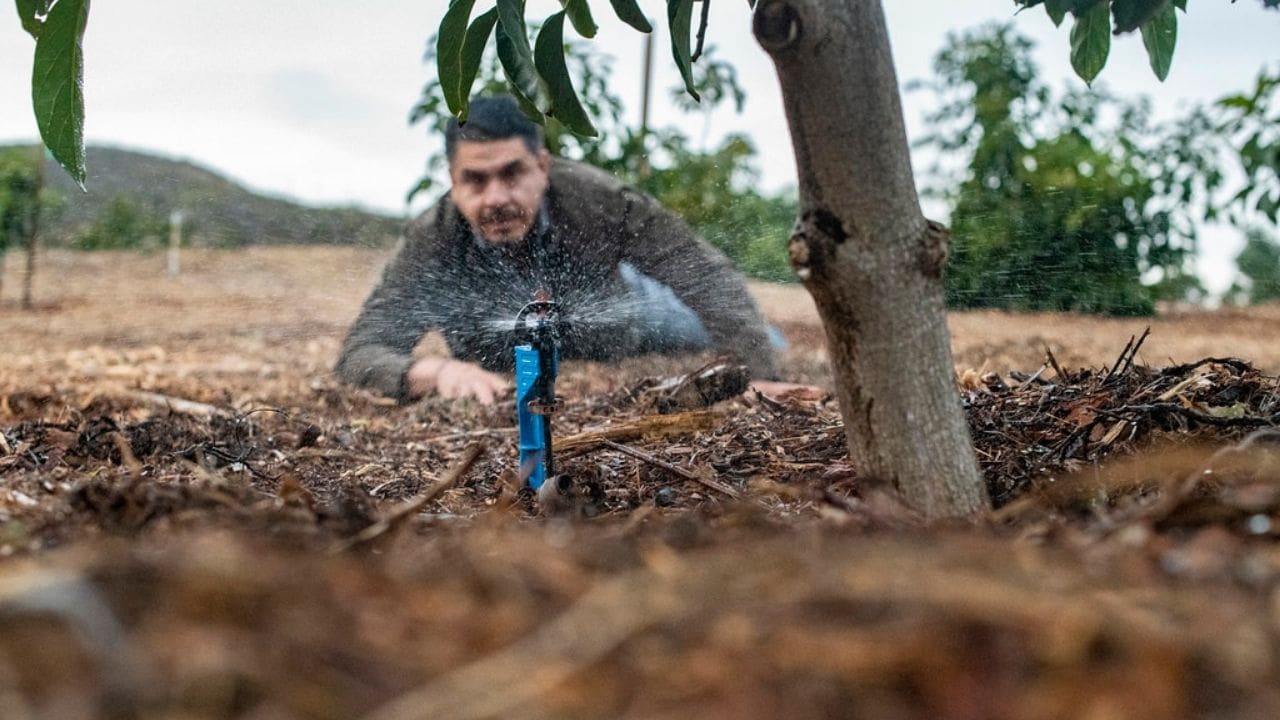

Select the Planting Location
Consider the environmental conditions and local climate when selecting the planting location for your drought-tolerant trees. Look for an area with well-draining soil to prevent waterlogging, as this can lead to root rot in drought-tolerant trees. Avoid low-lying areas where water tends to accumulate, as this can also lead to root suffocation.
Additionally, assess the amount of sunlight the area receives. Most drought-tolerant trees thrive in full sunlight, so choose a location with at least 6-8 hours of direct sunlight per day. Keep in mind any potential obstructions, such as buildings or large trees, that could block sunlight.
Furthermore, consider the proximity to structures and other trees. Planting too close to buildings or other trees can limit the space available for the tree’s root system to expand, potentially causing competition for water and nutrients.


Test Soil Drainage
First, you’ll need to assess the soil moisture level in your planting area. This will help you understand how well the soil retains water and whether it’s suitable for drought-tolerant trees.
Next, you can determine the water infiltration rate by conducting a simple percolation test.
Soil Moisture Level
Assessing the soil moisture level is an important step in determining the suitability of your planting area for drought-tolerant trees. To do this, you can conduct a simple test to determine the drainage capacity of the soil.
Start by digging a hole about 1 foot deep and wide in the desired planting area. This hole will serve as a test site for measuring the soil’s drainage capacity. Once the hole is dug, fill it with water and allow it to drain completely. This will give you an idea of how well the soil is able to absorb and drain water.
After the hole has drained, refill it with water and time how long it takes for the water to drain completely. If the water takes more than 24 hours to drain, this indicates poor drainage in the soil. In such cases, it may not be suitable for planting drought-tolerant trees, as these trees require well-draining soil to thrive.
On the other hand, if the water drains in 2-6 hours, this indicates good drainage in the soil. This is an ideal condition for planting drought-tolerant trees, as it ensures that excess water will not accumulate around the roots, which can lead to root rot and other issues.
If you find that the drainage is too slow, there are steps you can take to improve it. One option is to amend the soil with organic matter, such as compost or peat moss. These materials can help improve soil structure and increase drainage capacity.
Understanding the soil moisture level and drainage capacity of your planting area is crucial for selecting the right trees and ensuring their healthy growth. By conducting this simple test, you can make informed decisions about the suitability of the soil and take necessary steps to create a favorable environment for your trees.
Water Infiltration Rate
To determine the water infiltration rate, perform a simple soil drainage test in the planting area by digging a hole about 1 foot deep and wide, then filling it with water and timing how long it takes to drain completely.
As you pour water into the hole, observe how the water behaves:
If the water drains within 10-15 minutes, the soil has good drainage and is suitable for planting drought-tolerant trees.
However, if the water takes longer than 30 minutes to drain, the soil has poor drainage, which can lead to root rot and other issues for your trees.
Understanding the water infiltration rate is crucial to ensure that your trees receive adequate drainage to thrive in dry conditions. By conducting this simple test, you can make informed decisions about the suitability of your planting area for drought-tolerant trees.
Drainage Improvement Tips
Improving the soil drainage is essential for ensuring the success of planting drought-tolerant trees. To test soil drainage, dig a hole about 1 foot deep and wide in the planting area. Fill the hole with water and let it drain completely.
Then, refill the hole with water and time how long it takes to drain. If the water drains in less than 4 hours, the soil has good drainage. If it takes between 4-8 hours, the drainage is moderate, but if it takes more than 8 hours, the soil has poor drainage.
Consider adding organic matter like compost to improve drainage if needed. Good drainage is crucial for the health and longevity of your drought-tolerant trees.


Dig the Hole Correctly
When preparing to plant a drought-tolerant tree, ensure that the hole is dug to the appropriate depth and width to accommodate the root ball. The hole should be at least twice as wide as the root ball but no deeper than the root ball itself.
Here’s how to dig the hole correctly:
- Depth and Width:
- Dig the hole to a depth that allows the top of the root ball to sit 1-2 inches above the ground level. This will prevent water from pooling around the trunk and causing rot.
- Make the hole two to three times as wide as the root ball to provide ample room for the roots to spread out and establish themselves.
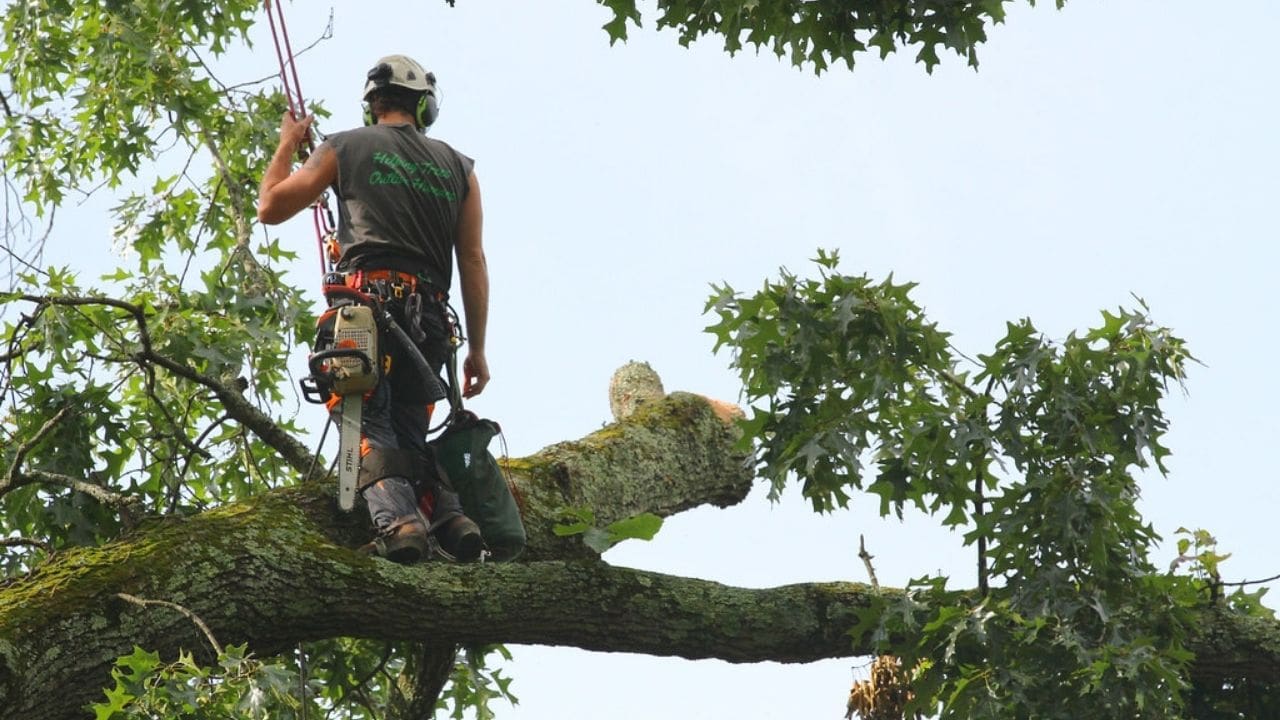

Mix in Compost if Necessary
After ensuring that the hole is the right depth and width for the root ball, you can proceed to mix in compost if the soil needs additional nutrients for the tree to thrive in drought conditions. Compost is an excellent way to improve soil structure and increase its ability to retain moisture, which is crucial for drought-tolerant trees.
Start by adding a layer of compost to the bottom of the hole before placing the tree in. Then, mix the native soil with compost at a ratio of 1:1 or 1:2, depending on the quality of the existing soil. Ensure that the compost is well blended with the soil to avoid creating a barrier that could prevent water from reaching the roots.
Once the tree is planted and the hole filled, create a small berm around the tree’s base and water thoroughly. The compost will gradually release nutrients into the soil, promoting healthy root growth and enhancing the tree’s ability to withstand drought.
Keep in mind that using organic compost is the safest option, as it doesn’t introduce harmful chemicals that could potentially harm the tree or surrounding environment.
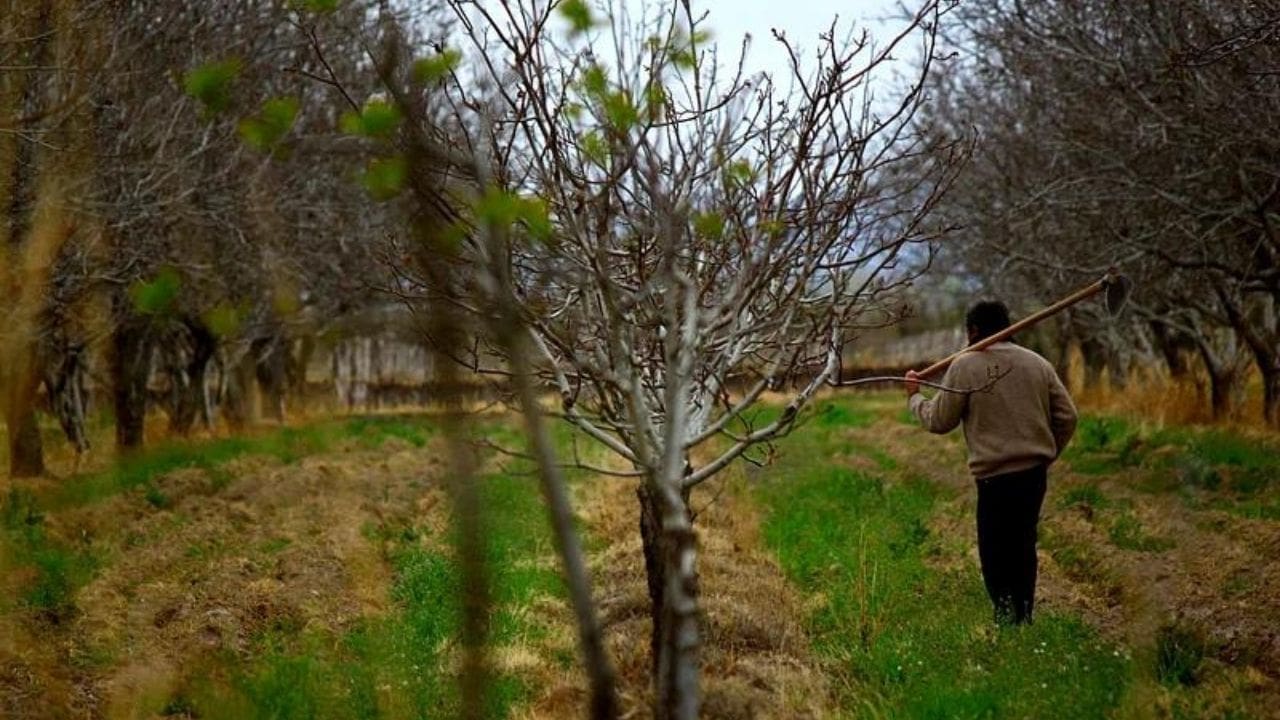

Position the Tree in the Hole
Position the tree in the hole, ensuring that the root ball is centered and upright for optimal growth. Once the tree is in position, follow these steps to ensure it’s properly placed:
- Gently backfill the hole with the soil you removed, tamping it down lightly as you go to remove air pockets and provide stability for the tree.
- Make sure the tree isn’t planted too deeply. The top of the root ball should sit slightly above the surrounding soil level to prevent water from pooling around the trunk and causing rot.
- Water the tree thoroughly to settle the soil around the roots and provide essential hydration for the newly planted tree.
- Create a shallow well around the tree to hold water, allowing it to percolate down to the roots. This will encourage the roots to grow deep in search of water, making the tree more resilient to drought conditions.
Ensuring the tree is positioned correctly in the hole and taking care with backfilling and watering will set the stage for successful growth and long-term health.
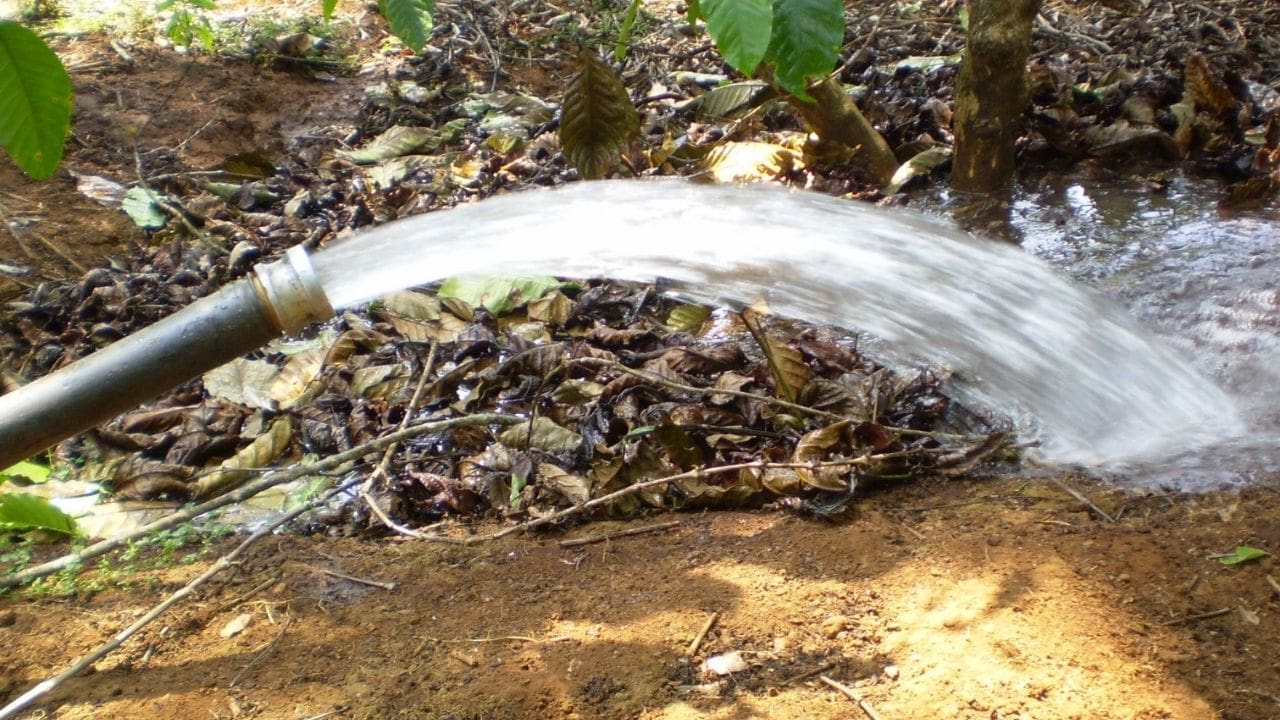

Backfill the Hole With Soil
Now that the tree is positioned in the hole, it’s time to carefully backfill the hole with the soil you removed, ensuring that it’s tamped down lightly as you go to remove air pockets and provide stability for the tree.
Start by placing the soil back into the hole around the tree’s root ball. Use a shovel or your hands to gently pack the soil as you go, avoiding compacting it too tightly, as this can hinder water and air flow. Make sure to leave a slight indentation around the tree to create a watering basin.
As you backfill, periodically step back and check to see if the tree remains straight. If needed, make small adjustments to its position before continuing to backfill. Keep adding soil until the hole is almost filled, leaving the top of the root ball slightly exposed. This ensures that the root flare, where the trunk widens at the base, isn’t buried too deeply.
Remember to water the tree periodically as you backfill to help settle the soil. Once the hole is filled, create a watering ring around the tree to facilitate irrigation. Proper backfilling is crucial for the tree’s stability and overall health.
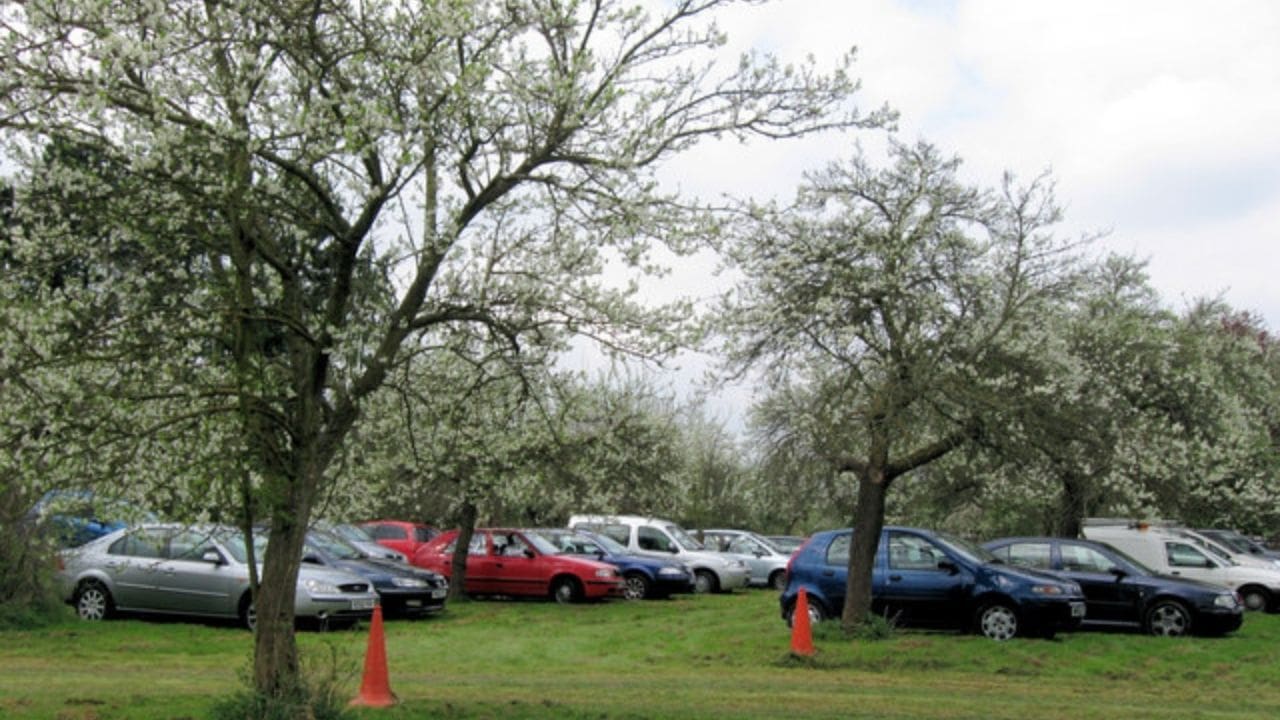

Water the Tree Deeply
To ensure proper hydration for the newly planted tree, thoroughly water the area around the root ball and extend outward to encourage deep root growth. After planting, the initial watering is crucial for the tree’s establishment and long-term health. Here’s how to water the tree deeply:
- Create a Watering Basin:
- Build a low berm or basin around the tree’s base using soil. This will help hold the water and direct it towards the roots, allowing for better absorption.
- Slow, Deep Watering:
- Use a hose or watering can to apply water slowly and deeply. This allows the water to penetrate the soil and reach the deeper roots, promoting strong root development.
When watering, aim to moisten the soil to at least 12 inches deep. This encourages the roots to grow deeper into the ground, making the tree more resilient to drought conditions. Additionally, watering deeply and less frequently promotes stronger root systems as the roots are encouraged to grow deeper in search of water.
Keep in mind that overwatering can be just as harmful as underwatering, so ensure the soil has good drainage and monitor the tree’s moisture needs as it establishes itself.
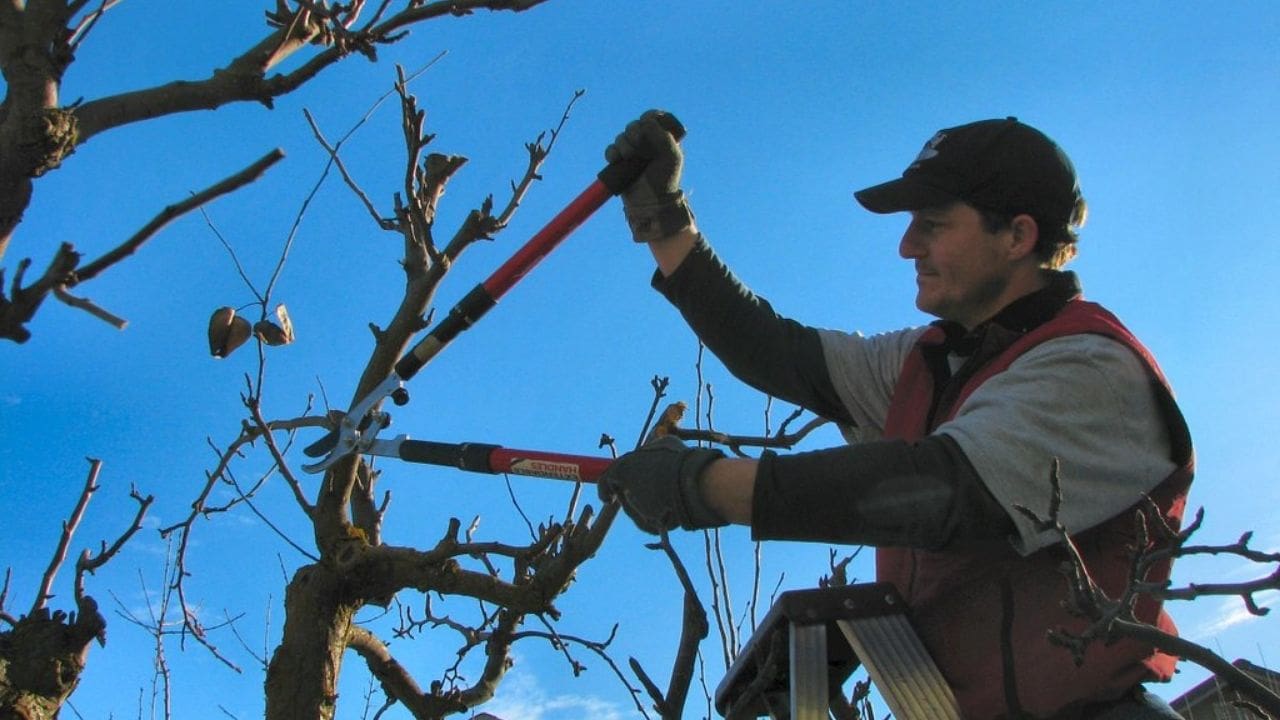

Frequently Asked Questions
How Can I Protect My Drought-Tolerant Tree From Pests and Diseases?
To protect your drought-tolerant tree from pests and diseases, regularly inspect it for signs of trouble. Use organic pest control methods and avoid overwatering, as excess moisture can invite disease. Prune any damaged or diseased branches promptly.
Are There Any Specific Pruning Techniques I Should Use for Drought-Tolerant Trees?
When pruning drought-tolerant trees, use sharp, clean tools to make precise cuts. Remove dead or diseased branches, and trim for shape and balance. Avoid over-pruning, especially during dry periods, to help the tree conserve water.
What Are Some Common Mistakes to Avoid When Planting and Caring for Drought-Tolerant Trees?
When planting and caring for drought-tolerant trees, avoid common mistakes like planting too deep, over-watering, and neglecting mulching. Remember, "measure twice, cut once" – plan and execute carefully for thriving trees.
Can Drought-Tolerant Trees Benefit From Any Specific Types of Mulch?
Yes, drought-tolerant trees can benefit from specific types of mulch. Organic mulch like wood chips or shredded bark can help retain moisture and regulate soil temperature, promoting the tree’s health and resilience to drought conditions.
Are There Any Companion Plants That Would Complement Drought-Tolerant Trees in a Landscaping Design?
Looking to enhance your landscaping with companion plants for drought-tolerant trees? Consider planting lavender, yarrow, or Russian sage. These drought-resistant options can complement your trees while adding beauty and diversity to your garden.


Hello there! I’m Logan Foster, the green-thumbed social media marketer behind the vibrant world of 1800TreeGuy.com. With roots firmly planted in arboriculture, I’ve branched out to help clients cultivate their dream outdoor spaces, one leafy canopy at a time. My knack for nurturing nature is more than a profession—it’s a way of life.
When I’m not talking trees and teaching the art of arboreal care, you can find me cheering on the Bulldogs—my alma mater’s pride and my forever team. My environmental studies there didn’t just teach me about ecosystems; they instilled a lifelong passion for protecting our planet.
Off the clock, I’m an adventurer at heart. Whether it’s trekking the Appalachian trails, pedaling down a mountain path, or crafting guides to share the wonders of the wild, I’m happiest with soil under my nails and the sun on my face. And let’s not forget Yoda, my pug sidekick. He may not have mastered the art of stillness, but his joyful grins are my daily dose of happiness.
I’m all about making connections—between people and the great outdoors and between my clients and their ideal landscape visions. My approach is personal; every tree has a story, and every garden reflects its caretaker.
If you want to green your scene or share in my outdoor escapades, give me a shout on Instagram or Facebook. Let’s cultivate a conversation and grow a community rooted in a love for the lush life.







